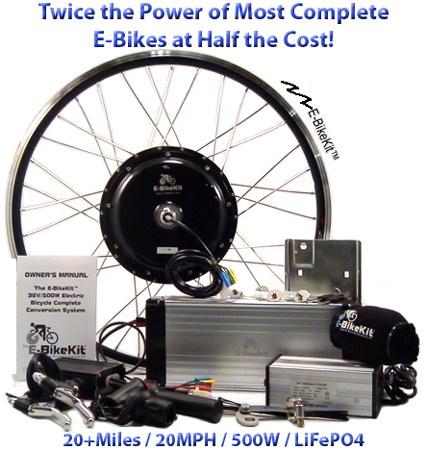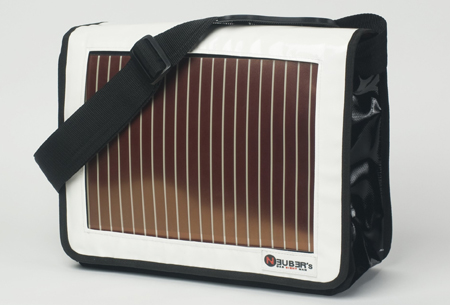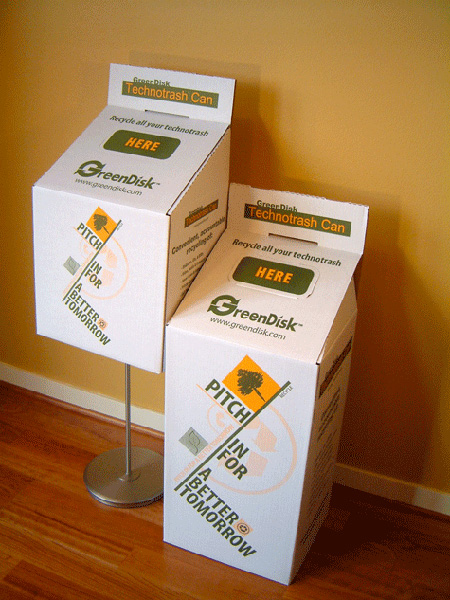The 40th anniversary of Earth Day is this year and, by now, most of us know about the big eco tech buys that would reduce our carbon footprint in a big way–installing a solar hot water/electric system at home, for example, or planting a wind turbine in the backyard. And of course, there are those stand-outs in the ever-growing list of spanky new green cars so many of us already know and covet. But if those kind of high-dollar items don’t fit your recession-era budget just yet, don’t despair. Rather, consider these lesser-known ways you can use green tech to shrink your carbon footprint this year. (And hey, if you need an excuse to make a purchase, think of it as your Earth Day present to yourself.)
1. Install a Home Energy Monitor
According to the Sierra Club, our homes are responsible for a whopping 21% of all greenhouse gas emissions. Increasingly, consumers want more control over how much energy their homes are using, and suddenly it seems like everyone–including major players like Google and Apple–is looking for ways to deliver “smart home” capabilities to every home.
Until we’re able to connect directly to the mainframe in large numbers, however, some workable solutions exist. One of our favorites is the PowerCost Monitor from Blue Line Innovations. Featuring a counter-top display that looks like an alarm clock, this little gizmo will give you a handle on not just your electricity usage at home–moment to moment as well as month to month–but how much it’s costing you. That, coupled with the real time display, offers a pretty good picture of how much it really costs to run your hair-dryer every morning, for example, or power your TV at night. The PowerCost Monitor typically helps customers reduce electricity bills by 6-18% annually–enough to pay for itself in six months to a year. It goes for $99.99 from Fry’s Electronics.

2. Extend Your Gas-Free Range with An Electric Hybrid Bike
We all know that biking is better for the environment and for our health. However, some of us are not big-time athletes, and we’re only willing to go so far under our own power (especially when there are large hills involved). Hence, the electric hybrid bike, or “pedelec”–a regular bicycle with an electric motor that kicks in when and where you need it, making that whole biking-to-work thing a lot more realistic.
While there are plenty of cool hybrid bikes out there, our favorite is yours. That’s right, yours. With the help of something called the E-BikeKit, any bike can be an e-bike, be it mountain bike, cruiser or recumbent. The E-BikeKit includes a wheel with a 500 amp hub motor, a 36v LiFePO4 battery and all of the hardware needed to install it. The manufacturer claims this kit will give you more power than your average e-bike, and there’s something else it has over the competition, too: price. While most new hybrid bikes will run you $2,000-$3,000, the E-BikeKit goes for around a grand.

3. Use A Portable Solar Charger to Juice All Your Gizmos
Let’s face it, we all use portable electronics. All of them depend on electricity, and probably their own special chargers as well. All of this adds up to a lot of juice over the course of a year, and a lot of e-waste as well. But while getting your house off the grid can pose a real financial challenge, getting your gadgets off the grid should not.
One of the new universal solar chargers we like is the Neuber Energy-Sun Bag from Konarka. By incorporating their patented Power Plastic into the actual fabric of a stylish messenger bag (available in nearly 40 colors), Konarka has succeeded in combining fashion and function without adding a lot of weight. (These bags weight just under a pound.) What’s more, they can charge mobile phones, digital cameras, iPods, MP3 players and more. Around $150, plus shipping (from Germany).

4) Buy Energy Star-Certified Electronics
A new study has shown that most of us are aware that Energy Star certified electronics represent a good choice when it comes to value and function. But the same study has revealed that most of us don’t associate the label with protecting the environment–which is unfortunate, considering Energy Star currently constitutes the closest thing we have to a LEED-style eco-certification for electronics, and nearly every tech purchase you are likely to make this year comes with an Energy Star option. If you’re looking for a good primer on Energy Star and what it really means, may we recommend An Energy Star Electronics Primer.
And while we’d never recommend running out and buying something you don’t actually need as an eco-option, if you were in the market for, say, a flat screen TV this year, we happen to like the Eco FlatTV 7700 line from Phillips. Certified to Energy Star 4.0 standards, it’s said to be “40 percent more energy efficient” than conventional models, due in part to its proprietary dimming technology that responds automatically to the room’s viewing conditions, a powers-saving mode that consumes almost nothing in stand-by power as well as 30% less plastic over previous models. (It also passes on the lead, mercury and toxic flame retardant stuff found inside earlier models as well.) None of this comes cheaply–these top of the line TVs run $1, 499 to $2,299–but chances are you won’t regret your purchase (or have to replace it any time soon). Available in stores starting in April, according to Engagdet.

5. Recycle your old electronics
All right, this one isn’t so much an Earth Day present for yourself as it as a gift your local landfill. But we’d be sadly remiss if we supplied a list of carbon-reducing eco-tech purchases in honor of Mother Earth without pointing out something pretty important: if you don’t recycle your old electronics, your tech is not all that eco, no matter how energy-efficient it is.
While finding places to recycle your used electronics can be difficult depending upon where you live, state recycling centers exist for computers, monitors and televisions (in Oregon and Washington). If you live elsewhere, consider stopping by your local Best Buy store, which will recycle a variety of different electronics, depending upon location. And if worse comes to worse, consider the paid “technotrash” recycling option from Greendisk. Send this company around $30-$50. and they’ll send you either the Standard or Tall box, which you can then stuff full of whatever you can fit inside and send it back, postage paid. (This covers just about anything you can think of, as well as more obscure e-waste like cords, cables, electronic media and their cases.) While it may sting a little to pay for recycling, consider this: it’s really just a reflection of the true price of our gadgets to begin with.

So there you have it – some great green-tech focused ways to make the most out of Earth Day. For some other ideas on Earth Day things you can do and associated resources, check out the EPA’s Earth Day Web site or the Earth Day Network.
Enjoying EarthTechling? Vote for us as Best Sci-Tech Blog (scroll down to fourth category) in the TreeHugger Best of Green Awards! Thanks!